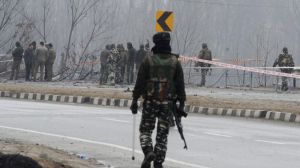WB ticks off govt on CR demolition
MUMBAI, MARCH 26: The visiting World Bank team has come down heavily on the Central Railway for its recent demolition drive which has left...

MUMBAI, MARCH 26: The visiting World Bank team has come down heavily on the Central Railway for its recent demolition drive which has left hundreds of slum-dwellers in the lurch. At a meeting with the railway authorities and the Mumbai Metropilitain Region Development Authority (MMRDA) last Tuesday, Chris Huuban, the bank’s South Asia infrastructure chief, said the drive is in clear violation of the policies for projects assisted by the bank.
This statement has set the alarm bells ringing through various government departments since the Rs 6,500-crore Mumbai Urban Transport Project-II for augmenting the suburban rail network hinges on the bank’s funding. However, it is not clear yet what ramifications, if any, this criticism will have as the government has promised not to undertake further demolitions.
As per the bank’s policies, rehabilitation plans of Project Affected Persons (PAPs) of projects assisted by it should be carried out without any hardships to the persons affected. Moreover, sources say, that bank had clearly instructed the government to identify rehabilitation sites before any eviction is carried out. In this case, the railway has clearly violated both clauses most of the 1,800 slum-dweller families have still not been relocated.
The bank’s role in the rehabilitation plans is critical as it proposes to finance 90 per cent of the total rehabilitation project cost. This amounts to approximately Rs 650 crore.
The bank has taken serious note of the fact that 3,000 structures along the Harbour Line have been razed without alternatives being provided to the PAPs. Of these, there are 2,352 structures involving persons eligible for relocation.
Replying to the bank’s critical remarks, railway sources had claimed that the encroachments along the Harbour Line had increased in the recent past and the demolition drive was an attempt to keep a check on them.
However, this argument was refuted by officials of the Society for Promotion of Area Resources, the non-governmental agency coordinating the relocation. Sources point out that the entire exercise commenced after state Chief Secretary Arun Bongirwar had visited the Harbour Line in January. Moreover, this visit was an immediate fallout of serious deliberations with the World Bank officials on MUTP-II.
On one of its earlier visits the World Bank had made it clear to the state government that large scale encroachments along the Harbour Line should be tackled on a priority basis and that it had been made mandatory that a resettlement programme should be implemented before it releases funds for railway upgradation projects.
The relocation of 9,000 families along the Central and Western railways is the largest rehabilitation project in the bank’s history anywhere in the world.
Though there are no major investments in the Harbour Line network under the MUTP-II — like the creation of say, additional corridors as on the Main Line — it envisages retrieving the critical 10-metre safety zone along this section of the Central Railway to improve both efficiency and frequency of services.
The widespread encroachments threaten to throttle three major railway expansion projects which include the quadrupling of the Borivli-Virar section, laying of the fifth line between Santacruz and Borivli and the fifth and sixth corridors between Kurla and Thane.
Though work on these projects is well underway, all of them are over six months behind schedule. Sources say the fifth line between Santacruz and Borivli is not likely to be completed by the December 2000 deadline.
Photos





- 01
- 02
- 03
- 04
- 05


























